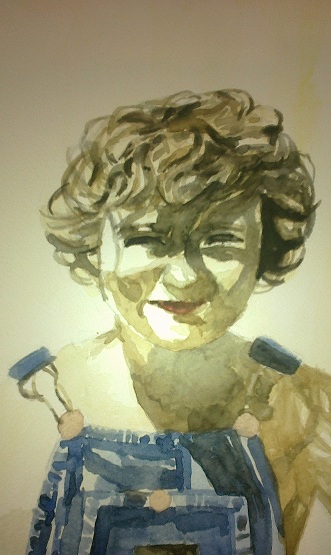Have you ever tried painting with water colors?
Water colors are just so much fun. Let’s go back to the time when I was learning about various aspects of painting. After doing numerous sketches with pencils and oil pencils, I finally began my journey with water colors. Working with brushes and a variety of color shades was altogether a different experience. Water colors reminded me of my school days when we used to get those tiny boxes filled with water color cakes. This time I was using good quality water color sheets and colors of high professional quality but the feelings were the same. I still felt the same excitement as those school days. I was just so eager to open up all the tubes and experiment with the colors in whatever way I wished.
Let the experiment start:
As tempting as experimenting on your own sounds, I realized big time that understanding some basic rules in any medium could actually do wonders to our immature creations. I specially loved the wet on dry technique. I never knew that we are not supposed to use white and black in a water color painting. Instead we have to leave the sheet blank for white and use the darkest tone of brown for black. We can also use prussian blue for black.
Working in layers in the wet on dry technique is such a pleasure. One is supposed to mix lots of water to give lighter shades and then keep on decreasing the water quantity for the darker tones. In order to maintain the lighter shades, the upper layers have to be done in a way that previous layers are not completely hidden. Not to forget that the last finishing touches with the darkest tone are as exciting as garnishing a tasty dish.
I also learned that the brushes have to be handled very delicately in water colors. It’s actually the tip of the brushes that should touch the water color sheet and not the entire length of hairs. These few simple tips really took my simple water color paintings to yet another level.
Some important things that I learned in water colors:
- Using a sheet specially designed for water colors (highly absorbent) is always better.
- The handling of brush is extremely important. (We are supposed to work with tip of the brushes).
- Water colors generally go from light to dark tones. The lightest tone is obtained by adding maximum water.
- The quantity of water is reduced in subsequent layers. The darkest layer has minimum water.
- One should be careful to judge that the darkest layer s just the right tone, it shouldn’t be too dark. It’s important to keep analysing before adding the next layers.
P.S. If you wish to try out the same water colors that I used, click on the following link. When it comes to painting, quality matters. I swear by these water colors:
Disclaimer: Uzma Khan Art is a participant in the Amazon Associates Program, an affiliate advertising program designed to provide a means for sites to earn advertising fees by advertising and linking to amazon.in.

0 Comments